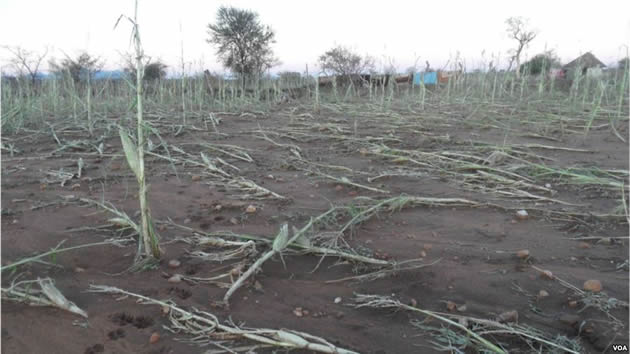El Nino threatens crops, livestock, says FAO

 Elita Chikwati Agriculture Reporter
Elita Chikwati Agriculture Reporter
Crop and livestock production prospects in Southern Africa have been weakened by the El Nino weather phenomenon that has reduced rains and increased temperatures, the Food and Agriculture Organisation (FAO) has said.
A special alert released on Tuesday by FAO’s Global Information and Early Warning System (GIEWS) indicated that reduced agricultural output would continue in 2016.
Already the 2014-15 bad season had resulted in food shortages in Southern Africa.
FAO Deputy Strategic Programme Leader (Resilience) Mr Shukri Ahmed said the season for planting maize in Southern Africa had delayed, while crops that were planted would be negatively affected by inadequate rains and higher temperatures.
“There is no enough moisture in the soil for planting while the region’s small-scale farmers are almost entirely dependent on rain, rendering their output highly susceptible to its variations,” he said.
“FAO had warned in March that the current El Nino would be strong and it now appears to be the strongest episode in 18 years. It will peak at the start of 2016 before the usual harvest time for farmers in Southern Africa.
“Weather forecasts indicate a higher probability of a continuation of below-normal rains between December and March across most countries,” said the GIEWS report.
According to the alert, South Africa had already declared drought status for five provinces, its main cereal producing regions, while Lesotho had issued a drought mitigation plan and Swaziland had implemented water restrictions as reservoir levels had declined.
According to FAO, the likelihood of another poor season was troublesome as it came on the heels of a poor one that had already depleted inventories, tightened supplies and pushed up local prices.
The GIEWS alert stated that the sub-regional maize production fell by 27 percent in 2015, triggering a sharp increase in the number of people already vulnerable to food insecurity in the region.
“Maize prices in Southern Africa are increasing. Moreover, currencies in the sub-region are very weak, which together can worsen the situation. While the drought affects many crops, including legumes, which are an important contributor to local nutrition, maize is grown by 80 percent of the subsistence farmers in the sub-region.
“Wholesale maize prices are up 50 percent from a year earlier in South Africa, while retail maize prices have doubled in Malawi and Mozambique. As households are already reeling from the previous poor harvest devote more income to basic needs, their access to critical farm inputs – such as seeds and fertilisers — is jeopardised,” Mr Ahmed said.
FAO’s sub-regional co-ordinator for Southern Africa, Mr David Phiri, said the organisation was working on a twin track approach with governments and other partners across the sub-region to address both immediate and long term needs.
He said FAO had already scaled up crop and livestock interventions to minimise the effects of the El Nino.
“The focus of immediate interventions includes supporting farmers by providing drought-tolerant crops, seeds and livestock feed and carrying out vaccinations.
“FAO is also supporting long-term resilience-building approaches among vulnerable groups, including the rehabilitation of irrigation systems, improving farmers’ access to rural finance and supporting wider use of climate-smart agricultural technologies. Several countries have already produced national plans that address the impact of El Nino on agriculture,” he said.









Comments